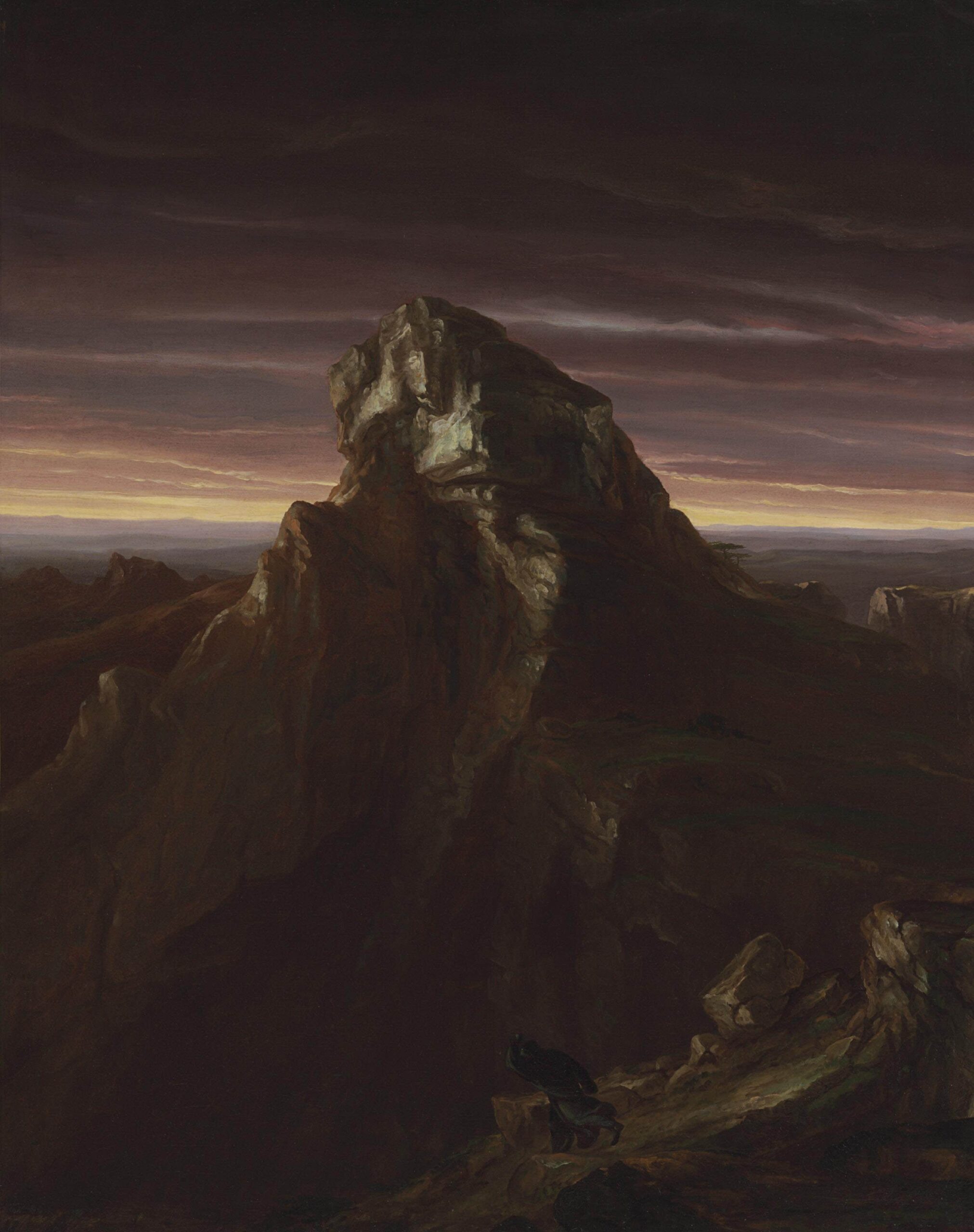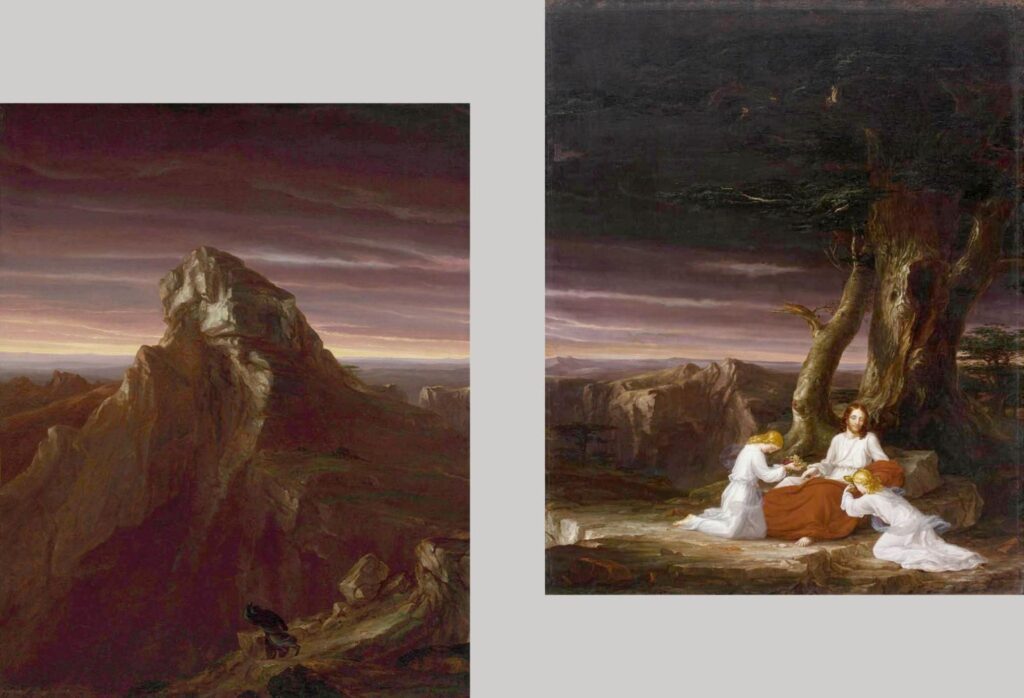Thomas Cole (1801–48)
The Tempter, 1843
Oil on canvas
McMullen Museum of Art, Boston College, Gift of Alexandria & Michael N. Altman P’22, ’24, ’26, 2019.12

Jeffery Howe
Professor Emeritus, Art History

A pioneer of the American movement of Romantic painters referred to as the Hudson River School, Cole depicted the American wilderness with much natural detail and practiced painting and sketching out of doors. Richards praised Cole for elevating “landscape art [to] among the foremost of the means for teaching and elevating human nature.”
Cole also created traditional symbolic pictures like The Tempter rooted in concepts of history and religion. Originally much larger, this painting was titled After the Temptation, or The Angels Ministering to Christ in the Wilderness. After criticism for its disjointed composition, Cole cut the painting in half and trimmed the top of the canvas to focus on Satan descending the shadowy mountain after the temptation of Christ. The right portion, with luminous figures of Christ and ministering angels became a separate painting, now in the Worcester Art Museum (see composite image).

